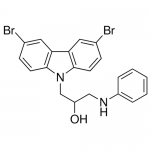Cell Cycle
What is the cell cycle?
The cell cycle is the cycle of cell growth and division. It consists of the interphase and mitosis phases, which can be further divided into subcategories. Checkpoints within the cycle exist to ensure the cell is prepared to advance to the next phase. Disruption of the cell cycle can lead to cell death and uncontrolled cellular multiplication (cancer).
Stages of the Cell Cycle
Interphase
Interphase (also known as intermitosis) is the interval between mitoses. Cells typically spend most of their time in this stage. The three main stages of interphase are G1, S, and G2.
G1
Usually the longest stage of interphase, the G1 (gap 1 or post-mitotic gap) stage is when the cell grows, accumulating proteins and organelles. The G1 cyclin (CG1) checkpoint is to ensure that environmental conditions are suitable for replication (ie. there are sufficient nitrogens available). If the cell passes the CG1 checkpoint, it enters the S phase.
S
DNA replicates.
G2
The cell grows and protein synthesis continues. In vertebrates the G2-M DNA damage checkpoint ensures any replication errors have been repaired.
Mitosis Phases
During mitosis, the cell divides into two daughter cells and its chromosomes are separated into two nuclei.
Prophase
Chromatids are condensed into chromosomes and the mitotic spindle is formed from microtubules. Centrosomes move to opposite poles of the cell and the nucleolus breaks down.
Prometaphase
The nuclear envelope breaks down and kinetochores form around centromeres. Microtubes in the mitotic spindle attach to kinetochores.
Metaphase
Chromosomes are further condensed and aligned in the metaphase plate (equatorial plane) halfway between poles. The metaphase checkpoint ensure chromosomes are aligned and kinetochores are attached to the mitotic spindle.
Anaphase
Chromosomes split at the centromere and daughter chromatids are pulled to opposite poles. The cell elongates.
Telophase
The nuclear membrane forms again and chromosomes uncoil. Mitotic spindle fibres break down.
Cytokinesis
In plants, the cell plate forms along the metaphase plate. In animals, the cytoplasm splits in two.
G0
The cell leaves the cell cycle and is in a resting state. It is not preparing to divide.
Cell cycle research requires a great diversity of life science products to investigate methods for cancer diagnosis and treatment. We are dedicated to developing cutting edge research products to aid in the study of the cell cycle, including monoclonal antibodies, polyclonal antibodies, antibody conjugates, and small molecule activators, antagonists, inhibitors, and probes.
View all Cell Cycle Products
